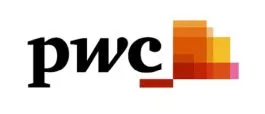QuickTake
On 14 March 2022, the European Central Bank (ECB), acting in its role at the head of the Single Supervisory Mechanism (SSM) at the head of the Banking Union, published1 its updated assessment report (the 2022 Report) on the progress European banks have made in implementing climate-related and environmental (collectively, C&E) risks disclosure expectations. These expectations were first set out in the ECB-SSM's November 2020 Guide on C&E risks (the November 2020 Guide).2
Consequently, the 2022 Report sets out the results of the ECB-SSM's assessment of Banking Union supervised institutions' (BUSIs') compliance with the standards set out in the November 2020 Guide. The 2022 Report also follows on from and supplements the ECB-SSM's November 2021 report on BUSI's C&E risk management.3 The ECB-SSM concluded in the November 2020 Guide and in the 2021 Report that virtually none of the SSM supervised institutions in the scope of the assessment would meet the minimum level of disclosures set out in the ECB-SSM's Guide and as such the regulator was keen to monitor their progress and report on it.4
The ECB-SSM plans to conduct a full review of BUSIs preparedness to manage C&E risks during the first half of 2022 and also plans to integrate C&E risks into its methodology in how it conducts the supervisory review and evaluation process (SREP) as well as on-site investigations. The ECB-SSM has confirmed that it will assess BUSIs' C&E disclosures again at the end of 2022. As explored in this Client Alert, BUSIs will need to step up their efforts on compliance with C&E risk management disclosure but also notably in meeting standards more broadly in EU sustainable finance regulation and the ECB-SSM will hold BUSIs closely to account.
Key takeaways from the ECB-SSM's 2022 Report
In total, the ECB-SSM assessed 109 banks that were classified as significant institutions as of 1 August 2021. It focused mainly on the disclosures that were made by Banking Union supervised institutions (BUSIs), as made at the highest level of consolidation under SSM supervision. For large banks with a parent group outside the countries participating in the EU's Banking Union, some information at the international consolidation level was also taken into account, at least where appropriate.
The 2020 stocktake stated that it "...demonstrated that virtually none of the institutions in the scope of the assessment would meet the minimum level of disclosures set out in the "ECB Guide on climate-related and environmental risks." While this may be a low bar from which to start from a baseline measurement, the Report confirmed that BUSIs have shown clear progress, notably in the disclosure of qualitative information, 45% of the banks' disclosures were assessed as insufficient both in terms of content and justification. The ECB-SSM also found deficiencies in how BUSIs disclose their key metrics and provide substantiation for their disclosures.
The 2022 Report's executive summary commented that:
"...most institutions still need to make significant efforts to transparently disclose their exposures to climate-related and environmental risks and further improve their disclosure practices. The ECB has therefore sent individual feedback letters to the banks under its supervision setting out key gaps in their disclosures and expects them to take decisive action to ensure they convey their risk profile comprehensively. Addressing such gaps will also accelerate institutions' preparedness for meeting impending technical requirements."
Based on this finding, the ECB supervisors will continue to seek to address risk disclosure. Frank Elderson, member of the ECB Executive Board and Vice-Chair of the ECB Supervisory Board, commented on this (see details below) and emphasised that BUSIs must try to compensate the deliberately poor quality of their disclosures by releasing information on green topics, which is not expedient as it does not give regulators any real substance to what both markets and regulators want to know, namely how exposed a BUSI is to C&E risks and what it is doing to manage these.
The Report's conclusions concerning the supervisory review on transparency and materiality of risks and methodologies, on the other hand revealed that one third of the institutions do not yet transparently disclose that they are exposed to material climate-related and environmental risks in line with their internal materiality assessments. Overall, it can be seen that the institutions hardly justify their climate and environment-related key figures and targets, with only one in five institutions disclosing this. An example of such a key figure would be the commitment to align with the Paris Agreement, whose goal is to limit the global temperature increase to well below 1.5°C within the current century. Crucially, more than a third of the institutes, do not disclose these aspects at all. The content of the disclosures leaves something to be desired as well as this is often very sparse and inconsistent.
The current report demonstrates that banks' current disclosures are not sufficient to meet future regulatory disclosure requirements set out by the Corporate Sustainability Reporting Directive (CSRD) and the Taxonomy. The CSRD is designed to ensure that companies report the relevant, comparable and reliable sustainability Information needed by investors and other stakeholders5 . The Taxonomy establishes a common classification system at an environmentally sustainable economic activities at the EU Level6 . For instance, while 74% of banks in the sample declared that they disclose Scope 1, 2 and 3 greenhouse gas (GHG) emissions, only 15% disclose (some of their) financed emissions. Moreover, only 12% of the banks disclose metrics on their portfolio alignment.
While the ECB encourages BUSIs to disclose the results of such research, the selection of portfolios and the associated reference scenarios do not always ensure a representative overview of the risks to which the institution is exposed. For example, a quarter of the banks in the sample make qualitative reference to the EU taxonomy, while only 7% provide quantitative information in connection with it.
Footnotes
1 Supervisory assessment of institutions' disclosure of climate and environmental risks to be published in March 2022 as an updated report of the previous guide published in 2020, available here.
2 Guidance on climate and environmental risks, published in November 2020, available here.
3 Available here.
4 Specifically, while no BUSI was close to fully aligning its practices with the supervisory expectations, the ECB[1]SSM recognised that the challenges linked to integrating C&E risks into strategies, governance and risk management arrangements are constantly evolving. Therefore, the ECB-SSM indicated it was committed to continuing dialogue with BUSIs so that they continue to strengthen their management of C&E risks. Other conclusions drawn by the ECB-SSM included:
- Virtually all BUSIs that performed a thorough materiality assessment expect C&E risks to materially impact their risk profile in the next three to five years.
- Although BUSIs have taken steps to adapt policies and procedures, few have implemented C&E risk practices with a discernible impact on their strategy and risk profile. Management bodies are increasingly taking formal responsibility for the management of C&E risks, however, in most cases, banks have not developed the relevant risk reports to enable their management bodies to exercise this responsibility
- Most BUSIs have a blind spot for physical risks and other environmental risk drivers, such as biodiversity loss and pollution.
Moreover, the November 2021 Report was preceded by a speech by an ECB Supervisory Board Member, much in the same way that the 2022 Report is accompanied by a speech. In the 2021 speech (available here), BUSIs were reminded with concrete examples on the need to incorporate C&E risks into risk governance frameworks.
5 More Information about the CSRD available here.
6 More Information about the Taxonomy available here.
The content of this article is intended to provide a general guide to the subject matter. Specialist advice should be sought about your specific circumstances.

